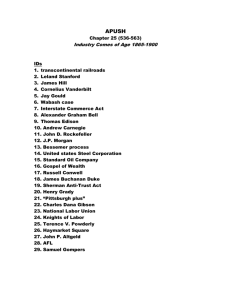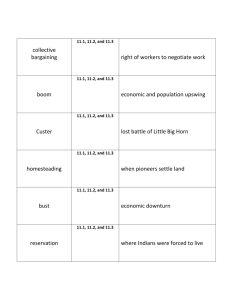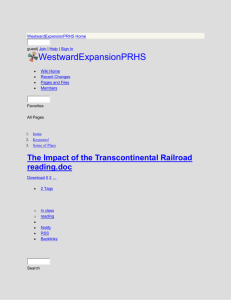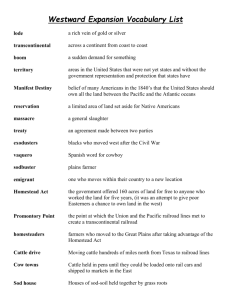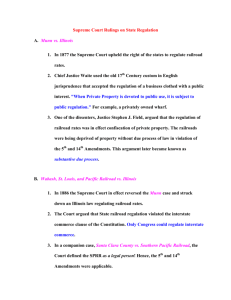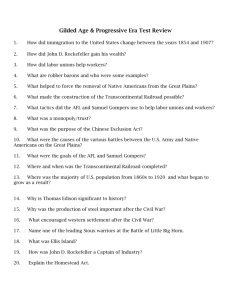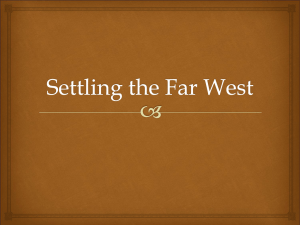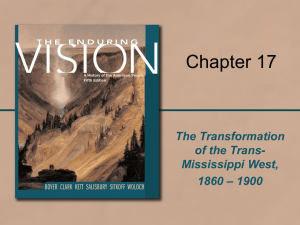TIME 6 (1865-1898) Name: Date: QUESTIONS
advertisement
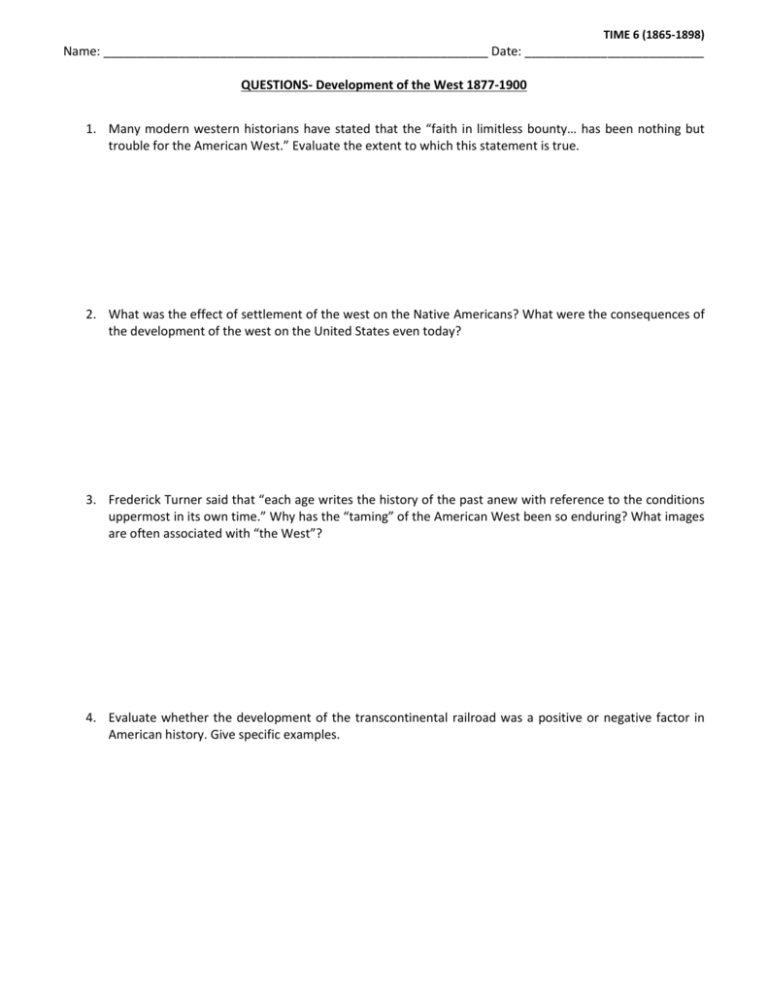
TIME 6 (1865-1898) Name: ________________________________________________________ Date: __________________________ QUESTIONS- Development of the West 1877-1900 1. Many modern western historians have stated that the “faith in limitless bounty… has been nothing but trouble for the American West.” Evaluate the extent to which this statement is true. 2. What was the effect of settlement of the west on the Native Americans? What were the consequences of the development of the west on the United States even today? 3. Frederick Turner said that “each age writes the history of the past anew with reference to the conditions uppermost in its own time.” Why has the “taming” of the American West been so enduring? What images are often associated with “the West”? 4. Evaluate whether the development of the transcontinental railroad was a positive or negative factor in American history. Give specific examples. 5. Which of the following characterized agriculture in BOTH the West and South in the period 1870-1900? a. Increased production b. Introduction of share-cropping c. Dry-farming techniques d. Rising prices for farm products 6. The outbreak of the Indian Wars of the 1870s was caused by all of the following EXCEPT: a. The US government’s effort to isolate Indian tribes on smaller reservations b. Rejection of earlier treaties by young Sioux warriors c. Perceived failure of the US government to honor past treaty commitments d. The division of tribal lands into individual farms for tribal members 7. The goals of the assimilationists were most in conflict with: a. Founders of the Carlisle School b. Terms of the Dawes Act of 1887 c. Terms of the Indian Reorganization Act of 1934 d. Granting of citizenship to Native Americans 8. The Chinese Exclusion Act of 1883 is most closely associated with: a. Hostility to foreigners in western states b. Completion of the transcontinental railroad c. Farmers’ grievances d. Segregation in the South 9. According to the Turner Thesis, the frontier encouraged all of the following EXCEPT: a. Social and political democracy b. Inventive and practical approaches to problems c. Growth of class divisions d. Wasteful attitudes toward natural resources 10. After the Granger laws ran into legal problems and were overturned in Wabash v. Illinois, Congress attempted to provide relief through the: a. Sherman Antitrust Act b. Interstate Commerce Act c. Homestead Act d. Atlanta Compromise 11. The New South movement promoted all of the following EXCEPT: a. Southern railroad systems integrated with the North b. A more self-sufficient southern economy c. Social integration of the races d. Investment in manufacturing 12. The Supreme Court upheld “separate but equal” for public transportation accommodations in the case: a. Plessy v. Ferguson b. Munn v. Illinois c. Wabash v. Illinois d. Brown v. Topeka 13. The chief cause of farm protest in the late 19th century was: a. Closing of the open range b. Middlemen, trusts, and railroads c. Increased money supply and prices d. Increased international competition 14. The main result of the crop lien system in the South in the late 19th century was: a. Decrease in acres planted b. A cycle of debt for tenant farmers c. Increased credit from northern bankers d. Greater diversification of crops

